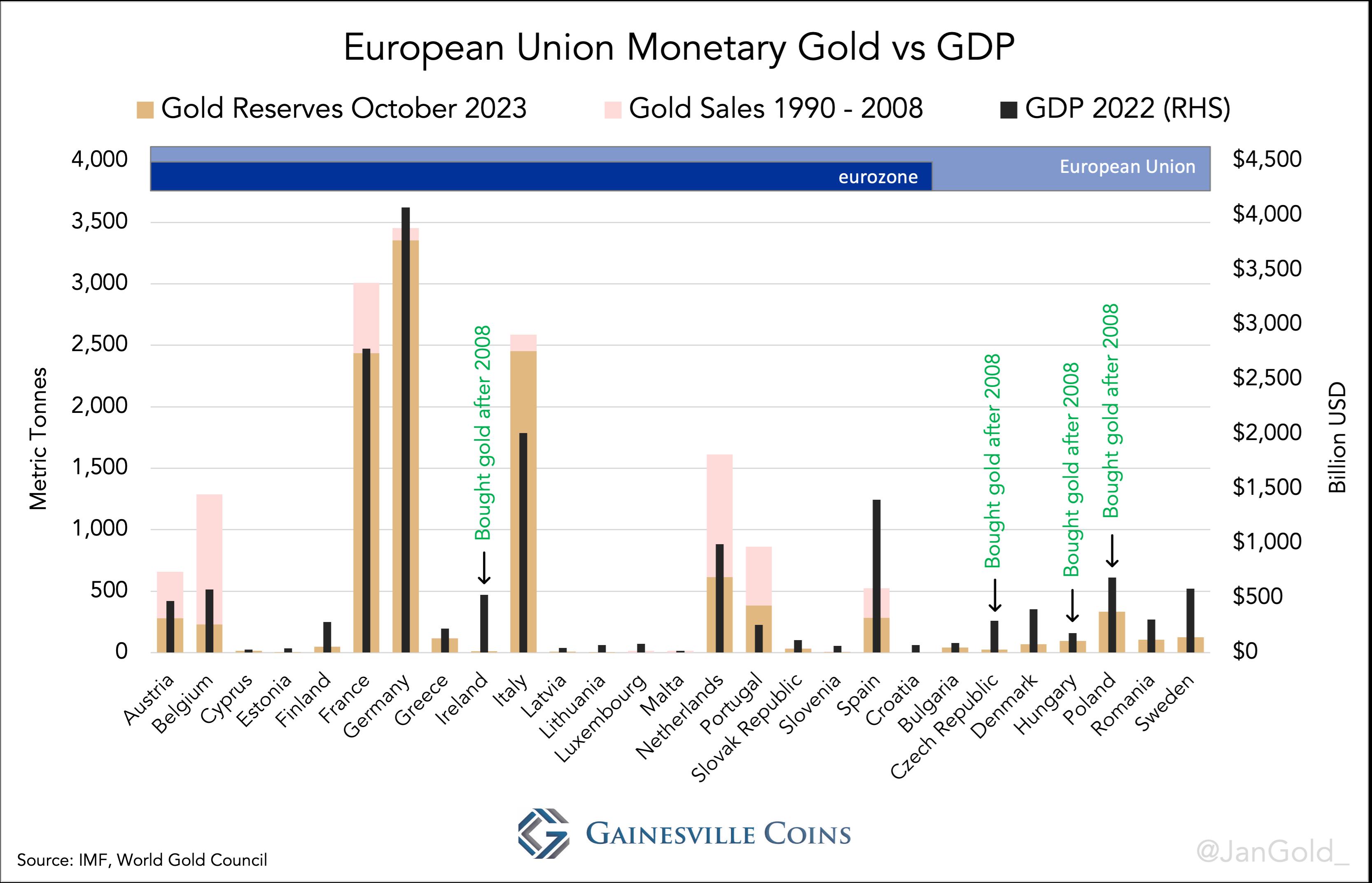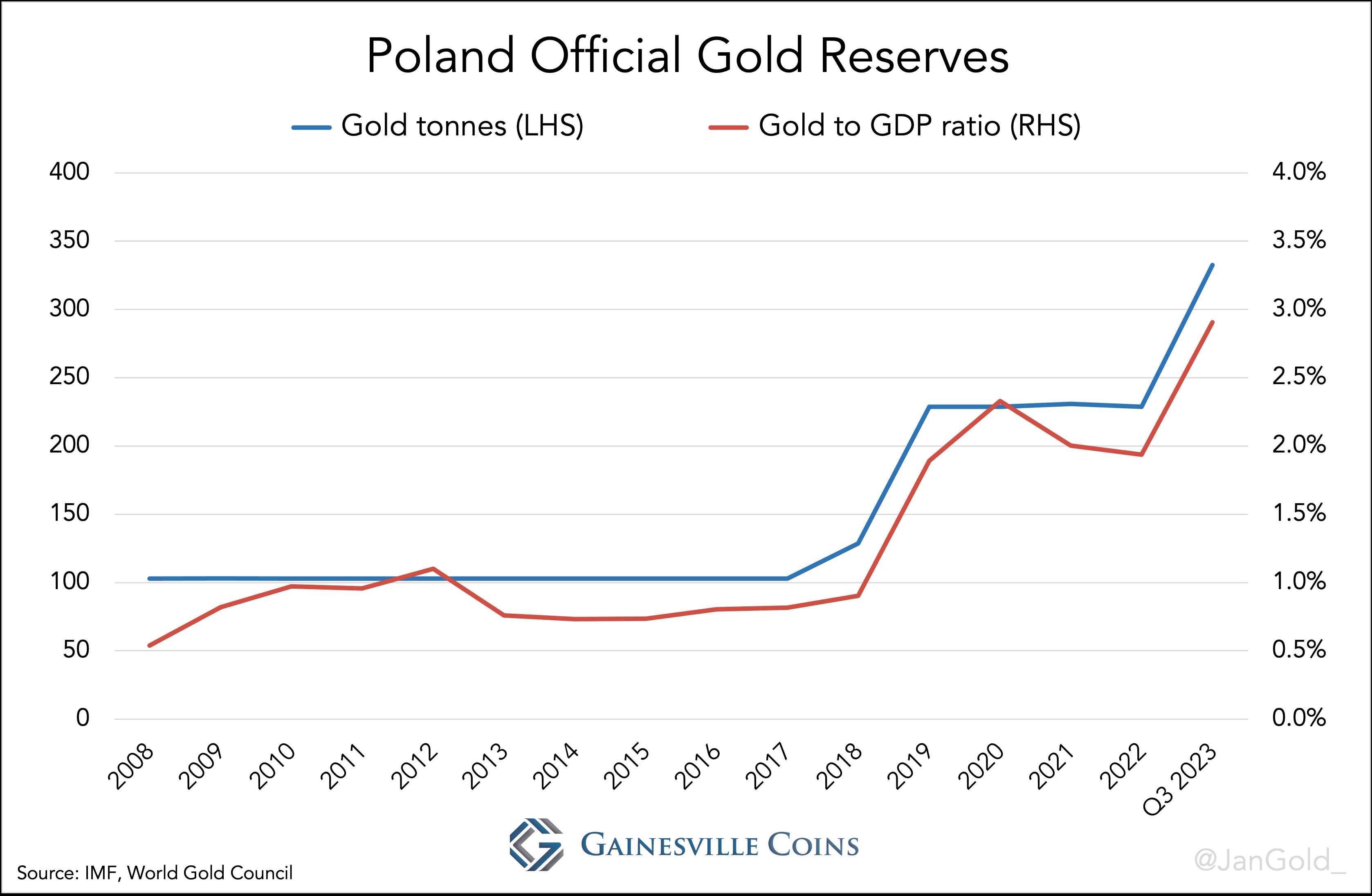by Jan Nieuwenhuijs, Gainesville Coins:
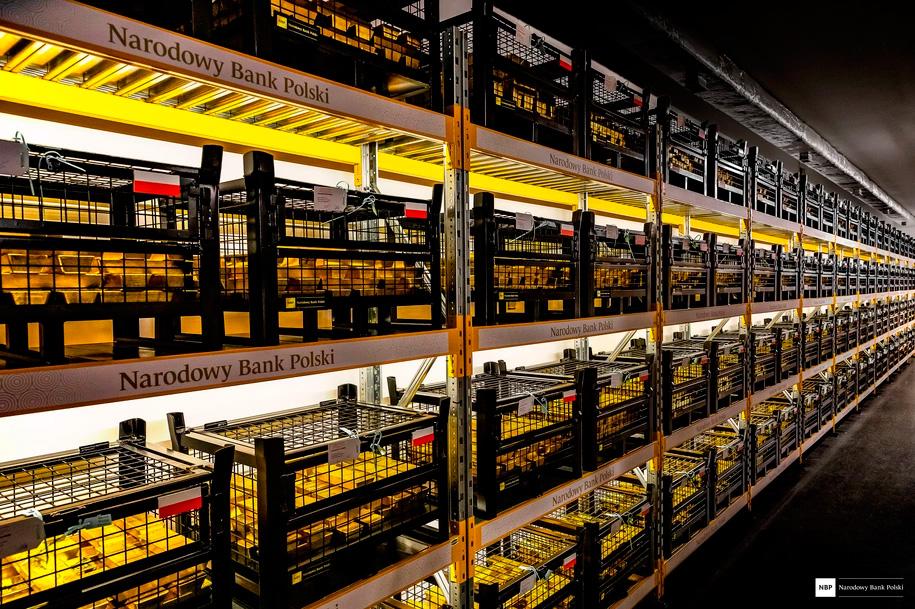
The Polish central bank has bought roughly 300 tonnes of gold in recent years to bring its gold to GDP ratio in line with the average in the eurozone. For medium and large economies in the eurozone, to which Poland might be included in the future, an equal monetary gold to GDP ratio is a covert requirement for nations to be prepared for a shift to a new gold standard. Based on these requirements I expect Poland to buy an additional 130 tonnes of gold.
TRUTH LIVES on at https://sgtreport.tv/
Introduction
For those that don’t know, the idea in the European Union (EU) is that eventually all countries adopt the euro and become part of the eurozone. At the time of writing the EU counts 27 countries, of which 20 form the eurozone. When the remaining 7 countries will introduce the euro is unknown.
Within the EU most notably Poland—but also Hungary—has been a large buyer of gold in the past years. Poland and Hungary are not yet included in the eurozone. After my publications “Europe Has Been Preparing a Global Gold Standard Since the 1970s. Part 2” and “Dutch Central Bank Admits It Has Prepared for a New Gold Standard” it’s irrefutable that there are secret agreements between nations in the eurozone to align gold reserves relative to GDP to be prepared for a new gold standard (or gold price targeting system). For Poland to be included in the euro area it has to match its gold to GDP ratio with the eurozone average.
On one hand, the agreements I’m referring to are secretive because some central banks in the eurozone refuse to be transparent regarding gold reserve alignment on grounds of “professional secrecy” laws (Belgium). On the other hand, some of these central banks have spontaneously stated they determine the size of their bullion holdings based on the gold to GDP ratios of large economies in close proximity (the Netherlands).
Of concern to our present study is Poland, eligible for eurozone inclusion, that is buying large volumes of gold which reaffirms the existence of the agreements. Not only are European central banks slowly revealing their gold strategy informally, all actions taken substantiate this policy.
Data Shows EU Central Bank Balance Gold to GDP Ratios
Last month a representative of the Dutch central bank (DNB) confessed in an interview that DNB holds gold worth about 4 percent of its GDP, which it has brought in line to the positions of France, Italy, and Germany. Bear in mind, the eurozone does not control the price of gold and thus their gold to GDP ratios, but there is a desire to harmonize these ratios throughout the eurozone, as illustrated in the chart below.
Supervision of total international reserves (gold and foreign exchange) versus GDP throughout the eurozone is even tighter. While European central banks have communicated that there are no legal obligations to coordinate reserves, they have likely agreed to recurrently use foreign exchange to equalize total reserves, and be able to exactly balance gold reserves among each other the very day they shift to a new gold standard. Periodically adjusting gold reserves is politically too sensitive.
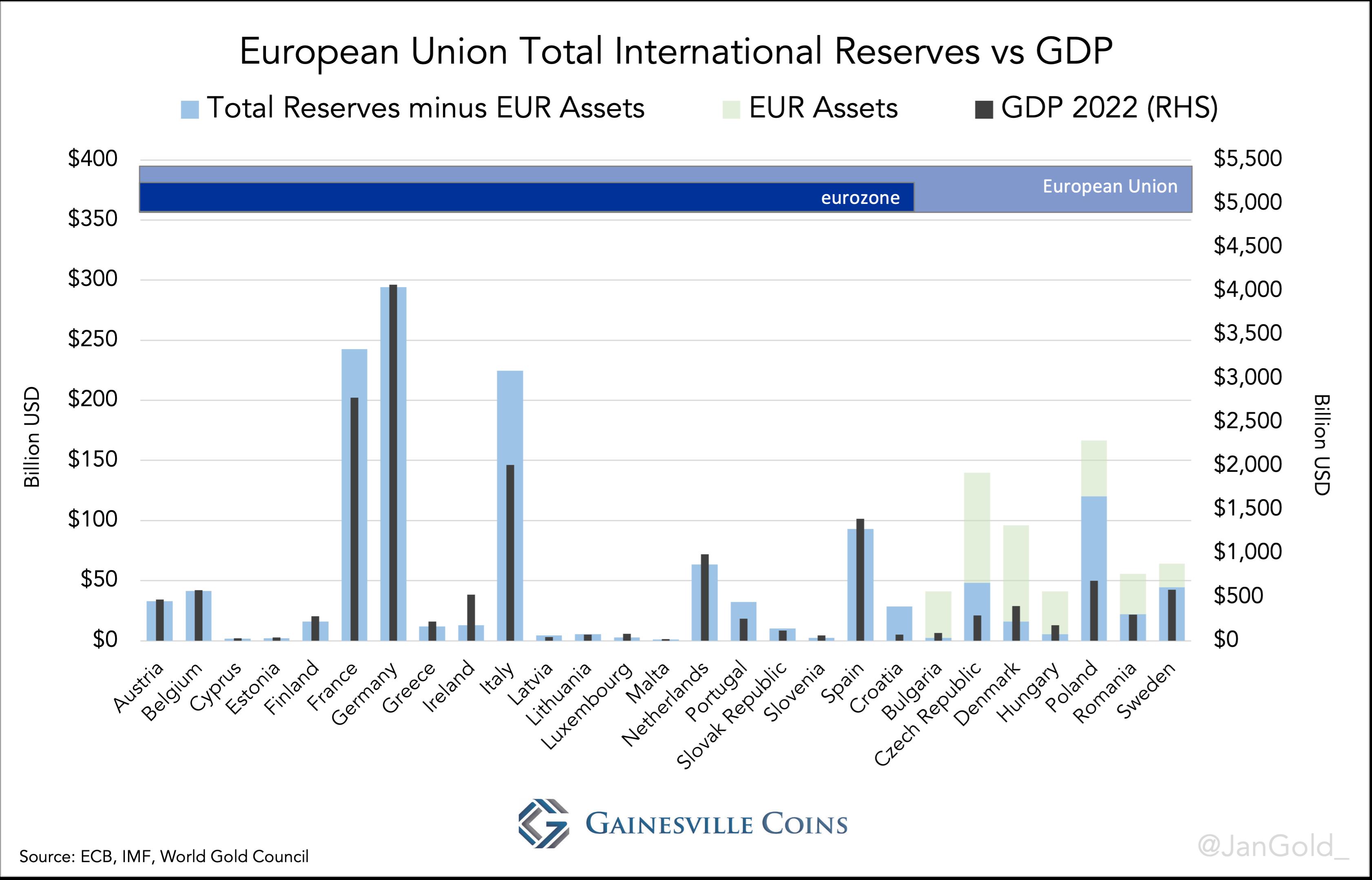 It seems that countries within the EU but outside the eurozone (especially Romania and Sweden) are also coordinating their total reserves to GDP to ratios.
It seems that countries within the EU but outside the eurozone (especially Romania and Sweden) are also coordinating their total reserves to GDP to ratios.
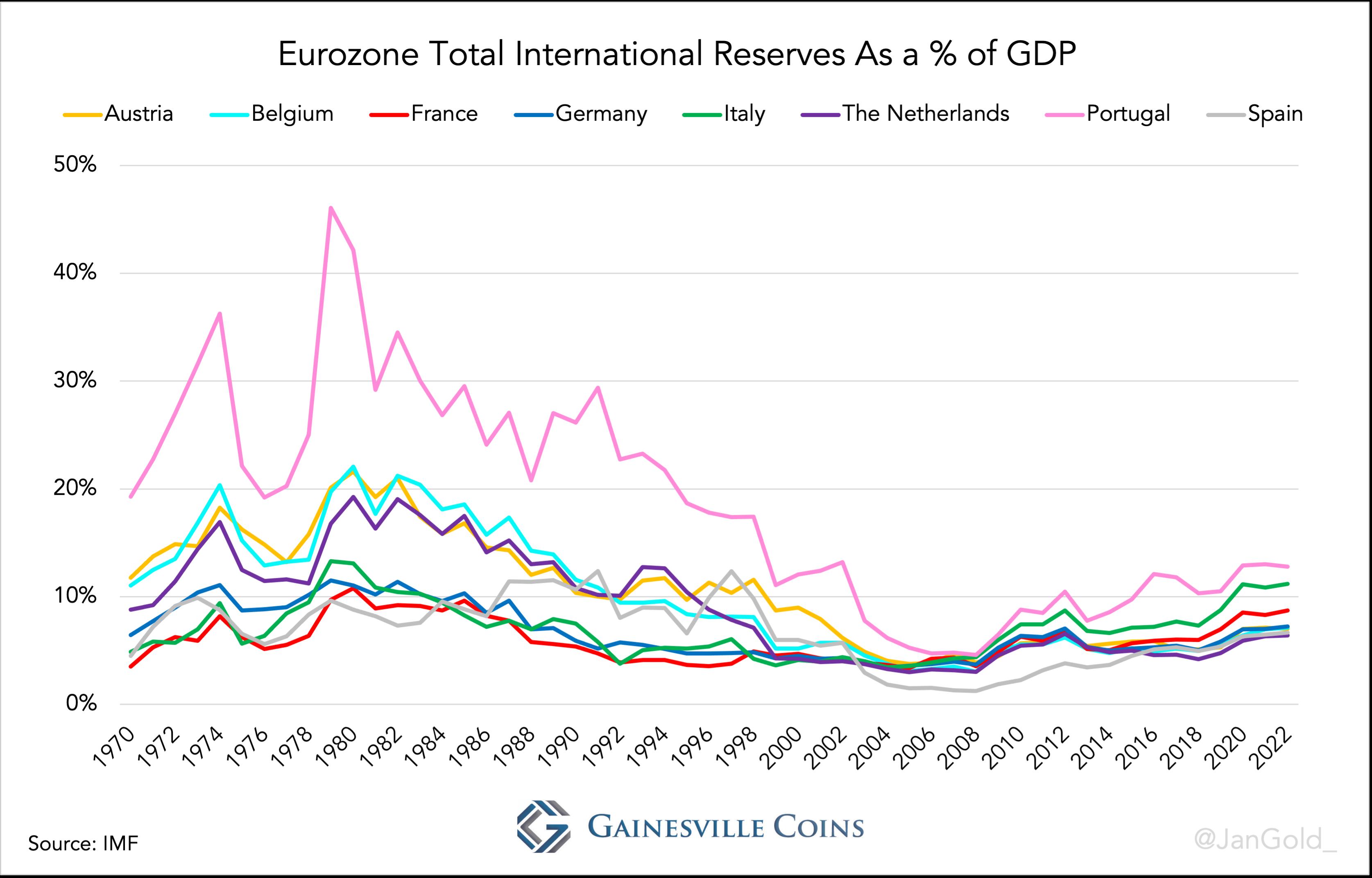 The precision with which total reserves to GDP ratios were equalized by eurozone central banks in 2008 is truly astonishing. Obviously, this has been meticulously planned.
The precision with which total reserves to GDP ratios were equalized by eurozone central banks in 2008 is truly astonishing. Obviously, this has been meticulously planned.
Prior to 2017, Poland held 103 tonnes of monetary gold, which was just 1% of its GDP. To come on par with its European associates Poland needed to raise its metal reserves significantly and so it did: in 2018 the Polish central bank (NBP) started buying gold aggressively. By now it holds 334 tonnes, which is nearly 3% of Poland’s GDP.
As can be seen in the charts, Poland would need 450 tonnes to reach 4% of GDP, like its partners in the euro area. Additionally, NBP needs to transfer gold to the European Central Bank the moment it joins using the euro. According to my calculations that would be about 16 tonnes at the prevailing gold price. In total I expect NBP to buy another 130 tonnes.
Why Central Banks Harmonize Gold Reserves
In the late nineteenth century, as more countries joined the classical gold standard, demand for gold went up. On a gold standard, upward pressure on a country’s currency—as a result from increased demand for gold—created downward pressure on prices of goods and services denominated in that currency. Adoption of the gold standard involved deflationary forces.
Read More @ GainesvilleCoins.com



